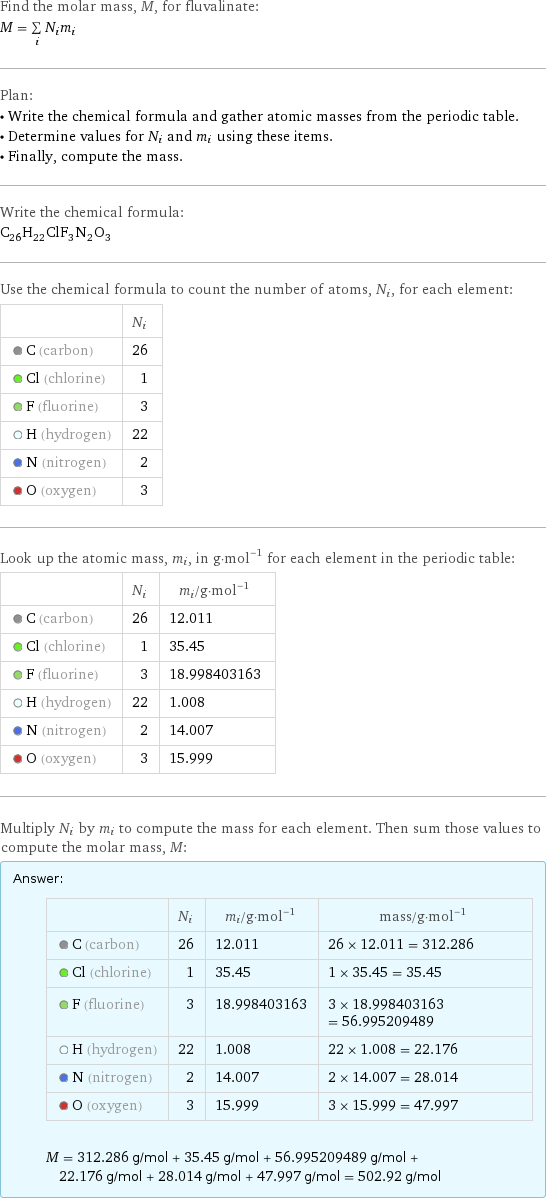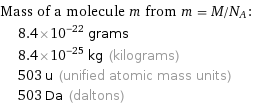Input interpretation

fluvalinate | molar mass
Result

Find the molar mass, M, for fluvalinate: M = sum _iN_im_i Plan: • Write the chemical formula and gather atomic masses from the periodic table. • Determine values for N_i and m_i using these items. • Finally, compute the mass. Write the chemical formula: C_26H_22ClF_3N_2O_3 Use the chemical formula to count the number of atoms, N_i, for each element: | N_i C (carbon) | 26 Cl (chlorine) | 1 F (fluorine) | 3 H (hydrogen) | 22 N (nitrogen) | 2 O (oxygen) | 3 Look up the atomic mass, m_i, in g·mol^(-1) for each element in the periodic table: | N_i | m_i/g·mol^(-1) C (carbon) | 26 | 12.011 Cl (chlorine) | 1 | 35.45 F (fluorine) | 3 | 18.998403163 H (hydrogen) | 22 | 1.008 N (nitrogen) | 2 | 14.007 O (oxygen) | 3 | 15.999 Multiply N_i by m_i to compute the mass for each element. Then sum those values to compute the molar mass, M: Answer: | | | N_i | m_i/g·mol^(-1) | mass/g·mol^(-1) C (carbon) | 26 | 12.011 | 26 × 12.011 = 312.286 Cl (chlorine) | 1 | 35.45 | 1 × 35.45 = 35.45 F (fluorine) | 3 | 18.998403163 | 3 × 18.998403163 = 56.995209489 H (hydrogen) | 22 | 1.008 | 22 × 1.008 = 22.176 N (nitrogen) | 2 | 14.007 | 2 × 14.007 = 28.014 O (oxygen) | 3 | 15.999 | 3 × 15.999 = 47.997 M = 312.286 g/mol + 35.45 g/mol + 56.995209489 g/mol + 22.176 g/mol + 28.014 g/mol + 47.997 g/mol = 502.92 g/mol
Unit conversion

0.50292 kg/mol (kilograms per mole)
Comparisons

≈ 0.7 × molar mass of fullerene ( ≈ 721 g/mol )

≈ 2.6 × molar mass of caffeine ( ≈ 194 g/mol )

≈ 8.6 × molar mass of sodium chloride ( ≈ 58 g/mol )
Corresponding quantities

Mass of a molecule m from m = M/N_A: | 8.4×10^-22 grams | 8.4×10^-25 kg (kilograms) | 503 u (unified atomic mass units) | 503 Da (daltons)

Relative molecular mass M_r from M_r = M_u/M: | 503